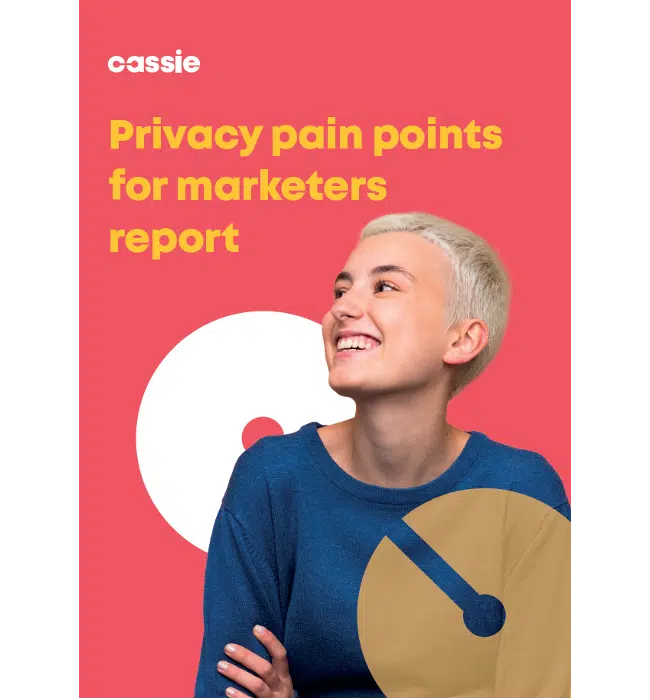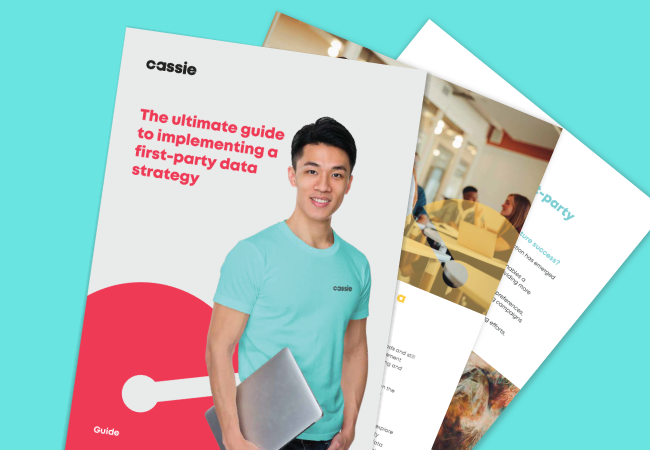What does cookieless marketing look like?
Posted: July 7, 2023
At the end of 2023, Google will no longer support third-party cookies on its Chrome browser – a decision that will effectively end two decades of using data and media to target ads for performance marketing.
As third-party cookies are about to become obsolete, the cookieless marketing approach has been gaining traction as a means to revive digital marketing. Amid digital privacy becoming increasingly important, enormous opportunities compared to invasive tracking technologies are set forth to come into action with cookieless marketing becoming mainstream.
There has been a recurring shift in lead generation and attribute techniques. Traditional methods of tracking and targeting technology are susceptible to privacy abuse and breaches. As people’s awareness of data privacy and protection gains momentum, regulations and industrial vanguards cut off cookie-enabled marketing life support for privacy to prevail.
Cookieless marketing refers to marketing strategies and techniques that aim to reach the target audience and deliver personalized experiences independent of invasive tracking technologies like cookies. It focuses on understanding consumer behavior and leveraging voluntarily shared, first-party data to create personalized content and experiences.
Marketers can integrate data from sources like surveys, website analytics, and social media interactions to create tailored experiences and increase engagement and conversions. As the days of cookies are numbered, it’s the perfect time for marketers to make the switch for a faster approach to user engagement and conversion optimization.
- Implications from loss of cookies
- Impact of cookieless marketing on campaigns
- 3 tips on how you can build customer trust through consent
Implications from loss of cookies
No doubt, making third-party cookies obsolete will give consumers’ control over their data. Companies can still collect data, but only if users explicitly consent to the purposes of the processing. The power factor provided by cookies, i.e., personalization of content and ads, will diminish, resulting in less effective, irrelevant ads for the users.
It will hit advertisers at the sweet spot that has garnered them immense marketing capabilities from third-party audiences. Consent established as a basis for both data shared with third parties and data procured from external sources has gnawed at the sum total of data, leaving attribution in jeopardy.
As granular consent for each and every purpose has been necessitated by data protection regulations, people wary of identity theft and data breaches feel concerned about sharing data, even for research purposes, with organizations they don’t trust. With nearly 70% of users opting out of cookies, there’s limited scope for companies to collect personalized information from customers.
Limited availability of information causes challenges in gaining comprehensive insights into customers’ preferences and their full user journey, resulting in inaccurate measurements of their interactions. As the survey by GetApp shows, 44% of marketers feel a need for spending to increase by 5% to 25% to achieve the same goals in a cookieless future.
Businesses should embrace change. Even though 89% of marketers still use third-party cookies to gain insights into identifying potential buyers, they are falling behind the 11% who feel confident in their preparation for measuring marketing performance with alternatives in place. Alternatives include reliance on first-party data, contextual marketing, a consent-based approach, unified IDs and identity solutions, advanced analytics and modelling, collaborative data partnerships, etc.
Impact of cookieless marketing on campaigns
As the use of cookies is on the decline, adapting to cookieless ways of marketing becomes an important part of marketing campaigns. It offers a host of potential benefits to marketers, including improved ad targeting, a better user experience, and better campaign results. Let’s learn how:
Improved ad targeting
With the shift to cookieless environments, marketers can leverage contextual targeting to deliver ads based on the content and context of the webpage viewed by users. By analyzing the keywords present on the webpage, the theme of the content, the website category, and user behavior (such as click patterns, search queries, etc.), marketers can understand the context in which the user is engaging. With context understood, marketers can deliver ads that are relevant to the user’s immediate interests and the content they’re engaging with in real-time.
Additionally, cookieless marketing encourages dependency on first-party data, which users willingly share with companies in exchange for personalized experiences, loyalty rewards or incentives, enhanced customer support, and improved products and services. First-party data speaks volumes about preferences, interests, and behaviors. With this accurate and reliable data, marketers can create a more relevant ad experience.
Marketers can create unified IDs by collecting and integrating data from various sources to standardize them first for consistency and compatibility across platforms, and then they can employ identity resolution techniques to link different identifiers associated with the same user across multiple channels and devices. Unified IDs provide a comprehensive understanding of the user’s journey and enable more accurate targeting.
Better user experience
Cookieless marketing reduces reliance on invasive tracking technologies. It enhances privacy and leads to users’ increased trust and confidence in the brands. Users feel less fatigued about ads following them on the web. As ads are served based on contextual factors, the frequency of irrelevant and repetitive ads reduces, leading to a less intrusive and more user-friendly experience.
Unified IDs and identity solutions as a means for cookieless marketing create a seamless experience for users across different devices and touchpoints. Marketers can connect user profiles to enable smooth transitions between devices, ensuring consistent experiences without losing context or personalization.
Cookieless marketing empowers users with a clearer and more accessible consent and preference management interface, allowing them to opt out of unnecessary choices. Respect for user preferences fosters a positive relationship between brands and users, leading to a better user experience.
Better campaign results
Cookieless marketing can unlock better campaign results. It encourages marketers to walk past traditional cookie-based methods to explore new avenues for audience targeting. It leads to the discovery of untapped audience segments, such as through first-party data analysis, contextual targeting, consent-based data partnerships, market research and surveys, niche communities and forums, etc. Expansion of reach results in improved campaign results.
Cookieless marketing enables marketers to adapt and comply with changing legal requirements. Compliance with privacy regulations demonstrates marketers’ commitment to protecting user data and privacy rights. Users readily engage with campaigns when they have confidence in marketers’ ways of handling their data responsibly. Increased engagement results in higher click-through rates, conversions, and overall campaign success.
Based on patterns identified in data collected from existing customers, marketers can select key features or attributes that distinguish their customers from the general population. Using the selected features, they can apply modelling techniques to compare the selected features of existing customers to a larger audience pool. This lookalike audience so derived allows marketers to expand their reach beyond their existing customer base. Expanded reach, in turn, increases the potential for campaign success.
3 tips on how you can build customer trust through consent
1. Make privacy purposeful
To make privacy meaningful, it’s important to only collect the data you need and respect customers’ privacy. You can do this by making sure that everyone in your company knows that data privacy is important and create a public statement about it. Also, make sure you have rules in place that follow all the laws related to data privacy. This will help people trust your business more. Lastly, ensure that you are regularly auditing your data privacy compliance.
2. Give your customers a reason to opt-in
When you ask customers for their data, tell them why you need it. Offer something in exchange like a special deal or reward. Make it easy to understand how to give permission and let people know what will happen with their data. Be honest and make sure people can change their minds later if they want to. Above all, make sure the customer has a good experience. Make it as easy and intuitive as possible for them to give permission and let them know that their data is safe and secure with your company.
3. Map out a customer journey that builds trust
To make customers trust you, map out their journey with your company. Think about who they are, what kind of messages you should send them, and how to make sure they can control their data. Make sure to be honest about what data you have and use it only in ways the customer agrees to.

85% of marketers are concerned about the potential impact of data privacy legislation changes
Changes in data privacy legislation ending third-party cookies could require us to rethink our strategies for reaching our customers. Read our Privacy pain points report to learn about marketers’ growing data privacy concerns.

